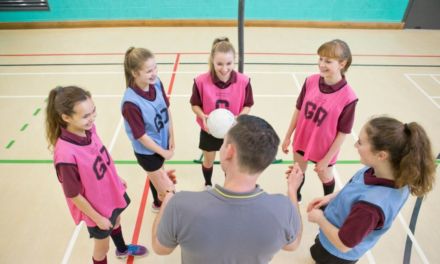As we all know, effective revision is a key contributor to the success of any student. Before we get onto PE specific revision ideas don’t forget to remind your students of revision fundamentals:
- Find a quiet place to revise WITHOUT distractions. No social media, no phones, no multi-tasking, no siblings demanding attention!
- Ensure revision is always active- Students will commit significantly more to their long-term memory when producing a revision aid or personal podcast than just sitting there reading a textbook.
- Students should focus on the topics they know least about. This is a common error!
Here are 7 effective methods of revising for PE exams:
1. Schedule time for your revision
Short bursts of revision (20-30 minutes) are most effective. Even in this relatively short time frame advise your students to revise two separate areas of the specification, maybe ones which regularly link with each other in synoptic questions. For example, this could be components of fitness and fitness testing at GCSE or Bernoulli’s principle and drag at A-level.
2. Use mark schemes effectively
Mark schemes should form an integral part of any revision programme. These can be used to extract key terminology that is being used within the mark scheme (What the examiner wants to see). This can be used to produce revision aids including mind maps, posters or revision cards.
3. AO1, AO2 and AO3 spider diagrams
These can be produced for all areas of the course. The idea is quite simple. Students Have a central concept in the centre of their diagram (E.g. components of fitness) and would then DEFINE (AO1 marks) all components of fitness close to the centre of their diagram.
In the next layer of the web, students can link examples (AO2 marks) in sport of when they are using that particular component of fitness.
Finally, furthest away from the centre of the diagram, students can evaluate (AO3 marks) the importance of that particular component of fitness for the example given This method of revision is particularly useful when practising how to structure paragraphs in extended questions.
4. Audio revision
If you ask any student to recite their favourite song lyrics it will be done within an instance! The same principle applies here. Ask students to record themselves on their phones reciting definitions/ outlining key concepts/ listing the benefits of warming-up etc etc. Students can then listen to these recordings when on the bus/ walking home. This method works best when attempting to learn definitions and lists.
5. Replicate revision aids
When students have produced these fantastic reason aids what do they actually do with them? Try asking them to reproduce that exact revision aid in rough. Whatever the student hasn’t remembered should then be highlighted on the original revision aid to indicate that he/she needs to spend more time revising that particular component the topic.
6. Encourage obscure answers
When revising, students will often give examples about the same sport time and time again (Usually football!). Often, exam questions will direct students towards a specific sport on the specification. Try and direct students to giving examples from these lesser known sports (For example, cricket or volleyball). Maybe have a ‘Sports of the week’ where students can only use examples for 2 or 3 different sports in their work. This will encourage students to widen their sporting knowledge and terminology and prepare them for any eventuality in the exam.
7. Do regular revision tasks
We all work hard enough, don’t we?! Well, it’s time to reduce our workload. Ask each pupil in your class to produce a 10-minute revision task on an area of the specification. Those pupils who don’t want to present don’t have to. They can produce a revision aid to be photocopied for the class, an interactive quiz or even a practical revision task. Spread these tasks out over a number of weeks and suddenly you have revised a lot of content!
We hope you like the sound of some of the ideas above, just try one new method and see what effect it has. For more information about effective revision please click on the following link:










